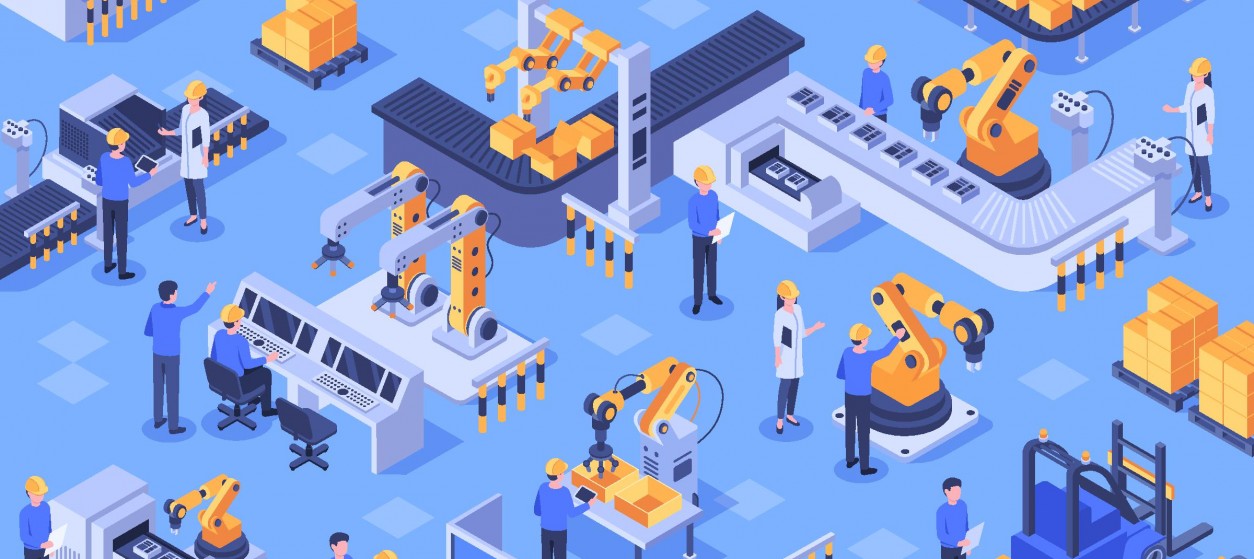Hyperautomation is, without doubt, one of the most popular trends of our time. The term is rather new: It has been introduced by Gartner as part of its 2020 strategic technology trends update. It refers to the deployment, combination and use of a pool of advanced automation technologies that provide increased intelligence, which increases both the accuracy and the speed of business processes. Hyperautomation adds a layer of data-driven intelligence over conventional IT automation systems such as office automation applications and business information systems like ERP (Enterprise Resource Planning) and CRM (Customer Relationship Management). This intelligence layer automates workflows that span multiple business information systems offering end-to-end automation. Moreover, it enables the extraction of data-driven insights from the data of the various systems. For instance, hyperautomation leverages optimization patterns based on data from multiple databases and business information systems, which significantly extend conventional business intelligence capabilities.
The Technology Enablers of Hyperautomation
Hyperautomation is about combining multiple automation and intelligence technologies, including:
- Robotic Process Automation (RPA): RPA technologies automate repetitive clerical tasks. They enable faster completion of tasks, while alleviate human errors that are likely to occur after several repetitions. As a prominent example, RPA tools enable the automation of entire document workflows including for example workflows involving reception of order documents, analysis of the documents’ contents, extraction of relevant information, as well as forwarding of the extracted information to other departments and employees. RPA processes may comprise Machine Learning components such as OCR (Optical Character Recognition). The latter boost the automation and intelligence of RPA workflows.
- Process Mining Tools: Process mining focuses on the discovery and optimization of business workflows based on the analysis of event logs about enterprise processes. The processing of such event logs enables the identification of operational abnormalities, rare events, and process bottlenecks. The term process mining lends its existence from the popular “data mining”: Process mining discovers process knowledge from process-related event logs in ways similar to how data mining extracts data-driven knowledge over historical datasets.
- Artificial Intelligence (including Machine Learning): Artificial Intelligence systems exhibit capabilities analogous to the abilities of humans. For example, they can recognize speech, perform lexicographical analysis of large documents, identify the contents and context of visual scenes, and more. Machine learning is a subset of Artificial Intelligence, which uses past observations to train software agents that continuously learn and adapt to the context of the problem at hand. Some of the earlier mentioned capabilities of AI systems (e.g., Natural Language Processing (NLP)) are based on machine learning systems. In the context of hyperautomation, AI and ML systems enable the development of statistical systems and processes that can continually learn and improve themselves. This is a major paradigm shift when compared to conventional deterministic IT automation, which operates based on fixed rules that cannot dynamically adapt to changing inputs and contexts.
- Organizational Digital Twins: This technology enables the creation of faithful cyber-representations of business processes. In several cases these digital processes correspond to physical world processes i.e., they transfer entire physical procedures in the digital world. Digital Twins enable organizations to simulate and optimize processes in the digital world without experiencing the adverse effects of trial-and-error processes in the physical world. For example, it allows industrial organizations to evaluate different configurations of production processes without a physical production line. This is a foundation for effective hyperautomation that combines AI, ML, RPA, and Process Mining systems.
Organizations seeking to adopt hyperautomation must gain experience on the above-listed technologies and their capabilities. Most importantly, they need to find ways for improving their business results based on a combination of the above-listed technologies.
Shaping an Effective Hyperautomation Strategy
Nowadays, many organizations are planning to ride the wave of hyperautomation. To this end, they have better create a proper strategy that will enable them to leverage the benefits in a safe and structured way. In shaping this strategy, enterprises should consider the following best practices:
- Business objectives first: Organizations must specify the business goals that drive their hyperautomation adoption journey. For example, hyperautomation may be motivated by the need to accelerate certain processes and to improve error-prone processes. In this context, organizations must position hyperautomation in their wider transformation journey. Likewise setting and monitoring appropriate KPIs (Key Performance Indicators) is one of the keys to successful implementation.
- Understand the scope of Hyperautomation: Hyperautomation provides intelligence beyond RPA. Organizations must understand the scope of hyperautomation towards evaluating relevant offerings. Specifically, they must gain insights on how hyperautomation differs from conventional IT automation, as well as insights on cost-benefit considerations regarding the transition from traditional business intelligence to end-to-end data-driven intelligence.
- Attract talent and gain experience: To successfully adopt hyperautomation enterprises must possess relevant knowledge and expertise. Therefore, they should consider attracting or training talent in relevant technologies like AI, ML, and RPA. Their knowledgeable employees will become the business owners of hyperautomation procedures and will drive relevant projects to their successful completion.
- Legacy Systems Integration: The technologies that enable hyperautomation must be deployed over legacy systems and processes. To this end, enterprises must plan for legacy integration projects, as well as for a gradual and smooth transition to the new reality.
- Vendors and Consultant Selection: The selection of proper technology partners is one more critical success factor. Hyperautomation comprises a new and trending pool of technologies, which is sometimes overhyped. Enterprises must avoid the hype and partner with reliable vendors that will tailor the technologies to their needs. In this direction, companies must carefully evaluate different vendors and integrators, including vendors of RPA, AI, and ML products. Moreover, they must partner with competent system integrators that can combine different products in end-of-end automation workflows.
Hyperautomation is one of the trends that will drive business process automation and optimization in the years to come. This trend falls in the broader scope of AI and automation technologies, which are currently adopted by business enterprises in an unprecedented pace. Enterprises must therefore consider the merits of hyperautomation as part of their wider digital transformation strategies. Moreover, they must start creating their own hyperautomation approach. In this direction, the above-listed guidelines could serve as a valuable starting point.









